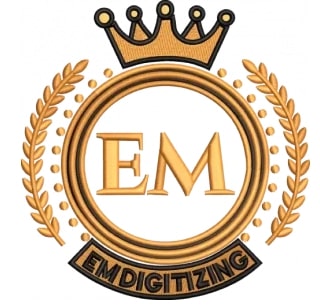


We Provide the Embroidery Digitization Services to our client.
Digitization for Embroidery is a fundamental process that transforms artwork, logos, or designs into a format that embroidery machines can accurately read and stitch onto fabric. Unlike traditional embroidery methods, where designs are manually crafted, digitization allows for precision, efficiency, and consistency in embroidery. This process is essential for achieving high-quality embroidery results, whether for corporate branding, personalised apparel, or decorative textiles.
The digitization for embroidery process begins with selecting or creating a design. Once the design is finalised, it is converted into a stitch file using specialised embroidery digitizing software such as Wilcom, Hatch, or Pulse. These programs allow a digitizer to map out every stitch, determining factors such as stitch type, direction, density, and underlay. Choosing the right stitch type is crucial in ensuring that the embroidery appears clean and professional. For example, satin stitches are commonly used for smooth, sleek lettering, while fill stitches are ideal for covering larger areas with texture and depth.
A well-digitized design ensures that the embroidery machine follows an optimal stitch sequence, reducing thread breaks, misalignment, or puckering. Poor digitization can lead to distorted embroidery, uneven stitches, or excessive thread usage, making the final product look unprofessional. High-quality digitization for embroidery takes fabric type into account, adjusting stitch density accordingly to prevent pulling or stretching. For instance, delicate fabrics require lighter stitching to avoid damage, whereas thicker materials like denim or leather may need reinforced stitching for durability.
Another advantage of digitization is its ability to improve efficiency. Traditional hand embroidery is time-consuming and requires exceptional skill, whereas machine embroidery, powered by digitized files, can replicate complex designs quickly and consistently. This is particularly beneficial for businesses producing embroidered uniforms, promotional products, or bulk orders, as it ensures every piece maintains the same level of quality and detail.
With advancements in embroidery technology, digitization for embroidery continues to evolve, allowing for more intricate and creative designs to be stitched with precision. Whether for commercial purposes or personal projects, high-quality digitization enhances the embroidery process, ensuring that every stitch is executed with perfection. Investing in professional digitization services can make a significant difference in the final embroidered product, turning a simple design into a beautifully crafted masterpiece.
Digitization for Embroidery is a crucial process that transforms artwork into a machine-readable format, allowing embroidery machines to stitch intricate designs with precision. This process involves converting an image or logo into a stitch file using specialised software, ensuring that each stitch is placed accurately for a flawless finish. High-quality digitization for embroidery enhances the overall look and durability of embroidered products, making it an essential step for businesses and individuals seeking professional embroidery results. Whether for branding, fashion, or personalised items, proper digitization ensures smooth stitching, correct thread density, and minimal errors, resulting in a polished and visually appealing design.
